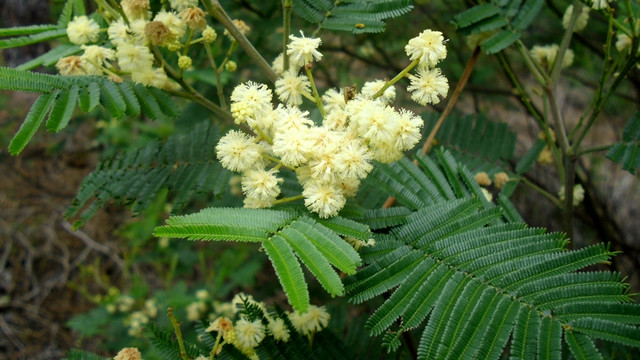
Rhodes University’s Communications Division recently sat down with Distinguished Professor Martin Hill from the Centre for Biological Control, to discuss the history of invasive alien plant species in South Africa and why they are such a threat to our water resources.
Q: Can you explain what role invasive plants have in the drought we are currently experiencing?
A: South Africa has a large number of invasive alien plant species. These plant species have been collected from around the world because they were seen to have some form of beneficial attribute. These include tree species such as pine trees, eucalyptus trees, and Australian acacias of which Black wattle is the most notorious.
Over the years, many of these plants escaped cultivation and have become invasive, largely due to the fact that they have no natural enemies here.
Q: How does an increase in biomass affect water availability?
A: Plants are essentially water pumps – and their water comes from the soil and leaves through holes in the leaves called stomata. Historically much of what is now referred to as the Western and Eastern Cape was dominated by low-growing, fynbos type vegetation and up on the Highveld, t is mostly grasslands. The increase in tree species in the catchments of these regions, the proliferation of aquatic weeds on our rivers and dams has increased the amount of water we lose through evapotranspiration.
Q: What impact does this have?
A: Early estimates suggested that we lose about 9% of our mean annual run-off of water. So to put that into context, that's 3300 million cubic meters of water per annum in South Africa that is lost because of alien plants. And a cubic meter is 1000 litres, so if you put that into context of the per person water consumption limit we have here, you can definitely see the impact these invasive alien plants species have
Q: What measures have been taken to address this problem?
A: In the mid-1990s, this loss of 9% of our mean annual runoff was the motivation for the Working For Water (WfW) Programme. This programme came after Guy Preston sat down with the then Minister of Water Affairs, Professor Kader Asmal, and suggesting that before we build more dams, let's clear our catchments of invasive plants. The idea was that by clearing the invasive plants, our runoff would increase and we might not need to build new dams.
Q: How does the Working for Water Programme work?
A: It started out as a small project in 1995 with a budget of about R25 million. It's grown over the last 24 years to where it's got a budget of about 2.4 billion. It's a poverty alleviation programme linked to the Expanded Public Works Programme. The Albany WfW project started in 1996 and you can still see the workers in yellow shirts around Makhanda who clear invasive plants.
The rationale behind it is that if we clear the invasive aliens, we will get an increase in the amount of water we have in this country. A classic local example is the water spring. In the 1980s and early 1990s, the whole Mountain Drive was wooded with pine trees, bluegum trees and Austraila acacias. And through a sustained effort by the then Grahamstown Municipality and the WfW Programme, the area was cleared to that of the grassland you now see. One of the things that happened as a result, is that the spring started running. Before that, the invasive trees were sucking up all that water.
Q: What is Rhodes University doing about the invasive problem?
A: So the WfW programme is an Expanded Public Works programme, which means it takes into account people who have previously unemployed, upskills them and employs them… and gets them registered to use herbicides, gets them registered to use chainsaws, sends them out to chop down trees and do whatever need to be done to cut back the invasives. But, right from the start of the programme it was obvious that the scale of the problem was far too large to tackle manually and so one of the pillars of the WfW became biological control, or the introduction of host-specific insects and pathogens that could reduce invasive plant populations, or at least curb their spread.
I would put it to you that we never would have gotten on top of the long-leaved wattle problem on Mountain Drive had there not been an insect, which essentially sterilised and killed the plant and stopped the plant releasing seeds.
Q: How can we (residents) help save water with regards to plants?
A: The WfW Programme has a very good relationship with the nursery industry and there's a big push to promote not only indigenous species, but species that are endemic to a particular area. When you go to the nursery you should be able to find plants which naturally occur here in the environment of Makhanda.
There’s a common misconception indigenous plants take long to grow and they're not as pretty… but that's just nonsense.
But what's important for me is not so much what you grow in your garden, but how you dispose of what you grow in your garden. We always say that if you want to see what invasive weeds are found in a particular town, you go to the municipal dump, because that's where you'll find them.
I know that the municipality and the municipal dump here has bigger issues than invasive alien plants, but some form of chipping and mulching facility within the environs of Makhanda would be would be a really good thing. Because even those who want to dispose of the invasive species from their gardens, don’t really have appropriate options.

